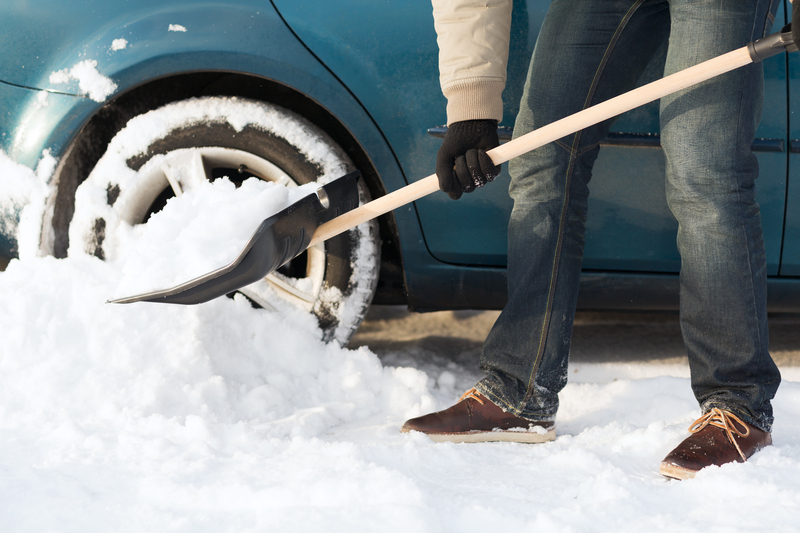Storage Secrets: Protecting Your Sofa Long-Term
Posted on 21/05/2025
Storage Secrets: Protecting Your Sofa Long-Term
Your sofa is more than just another piece of furniture--it's the heart of your living space, a hub of comfort, and a significant investment. Whether you're moving, downsizing, or simply redecorating, storing your sofa properly is crucial to maintain its pristine condition for years to come. This comprehensive guide unveils all the storage secrets for protecting your sofa long-term. Learn expert-approved methods, vital tips, and actionable insights to ensure your beloved couch stays fresh, functional, and fabulous.
Why Proper Sofa Storage Matters
Improper storage can lead to permanent damage, from sagging cushions and warped frames to unsightly stains, mold, or pest infestations. Sofas are susceptible to temperature changes, humidity, dust, and physical stress. By understanding the best practices surrounding protecting your sofa in long-term storage, you'll save money on future repairs and extend the life of your investment.

Prepping Your Sofa for Storage: The Essential Steps
1. Deep Clean Your Sofa
The first and foremost step in safeguarding your sofa is thorough cleaning. Dirt, oils, and crumbs can attract pests and mold, causing irreversible damage during storage.
Here's how to do it right:
- Vacuum cushions, crevices, and surfaces with an upholstery attachment to remove dust, debris, and pet hair.
- For fabric sofas, use a fabric cleaner or a mild soap solution. Ensure the fabric is fully dry before storing.
- For leather sofas, wipe down surfaces with a leather cleaner and conditioner to prevent drying or cracking.
- Remove and launder washable covers.
- Allow the sofa to air dry completely to thwart mold and mildew growth.
2. Disassemble When Possible
Large, bulky sofas are prone to frame warping and upholstery stretching if stored incorrectly. Disassembling your sofa makes it easier to move and store, reduces stress on joints, and protects delicate legs and arms.
- Remove legs, arms, and cushions if possible. Keep hardware and screws in labeled bags for easy reassembly.
- Wrap detached pieces with protective material to prevent scratching.
- For reclining or sectional sofas, refer to the manufacturer's manual for safe part removal.
3. Choose the Right Storage Environment
The storage space you select is equally critical. Sofas require a climate-controlled environment to ensure lasting protection.
- Climate control: Maintain stable temperatures between 55-75?F (13-24?C) and moderate humidity (30-50%) to prevent mold, mildew, and cracking.
- Cleanliness: Only use dry, clean storage units free from leaks, dust, and pests.
- Elevation: Store your sofa off the floor using pallets or blocks to prevent water damage from unexpected leaks or flooding.
- Ventilation: Avoid stuffy, unventilated spaces. Fresh air circulation reduces mustiness and condensation.
4. Protective Coverings: What Works Best
What you wrap your sofa in is pivotal to its preservation. Avoid low-quality plastic covers, which can trap moisture and foster mold. Instead, consider:
- Breathable fabric covers (e.g., cotton or canvas drop cloths) protect against dust, light, and minor scrapes while allowing airflow.
-
Quilted sofa storage bags offer an extra layer of cushion and insulation.
- For leather sofas, specialty leather sheets or blankets prevent drying and scratching.
Avoid heavy-duty plastic sheeting for long-term storage unless you leave openings for ventilation.
Top Storage Tips for Long-Term Sofa Protection
1. Keep It Upright and Supported
- Store your sofa upright, not on its side or back, to maintain its natural shape.
- Distribute the sofa weight across level surfaces to avoid frame warping.
- Never stack heavy items on top of your sofa--they can flatten cushions and deform the structure.
2. Mind the Placement
- Allow space around the sofa for airflow. Position it a few inches away from walls.
- Don't cram the sofa tightly with other items; this encourages scuffs and squished upholstery.
- If stacking is necessary, ensure only lightweight, soft items are placed on the sofa.
3. Moisture and Pest Prevention
- Use moisture absorbers or desiccant packs in the storage area to maintain ideal humidity.
- Place natural pest repellents (like cedar blocks) nearby to discourage bugs and rodents.
- Check for any cracks or openings in the storage unit that pests could enter.
4. Regular Checks and Maintenance
- Try to inspect the sofa every couple of months. This early detection discourages pest activity and mold growth.
- Periodically air out covers, and if possible, rotate or reposition cushions.
- If stored for over a year, refresh with a gentle clean before use.
Common Mistakes to Avoid When Storing Your Sofa
Don't compromise the longevity of your stored sofa by making these missteps:
- Leaving the sofa dirty. This can permanently stain, stink, or attract bugs.
- Using plastic wrap without ventilation. Trapped moisture breeds mildew.
- Storing in a humid, non-climate-controlled space. Both wood frames and upholstery materials degrade with excess moisture.
- Ignoring cushion care. Flattened, misshapen cushions are tough to restore.
- Overloading on top. This ruins the seat's supportive structure.
- Not labeling disassembled hardware. Reassembly becomes a frustrating puzzle.
Sofa Material Matters: Tailoring Your Storage Secrets
Fabric Sofas
Fabric sofas are your cozy companions but are especially vulnerable to dust, stains, and mildew. Always thoroughly clean and fully dry before storage. Use breathable covers, and avoid excessive weight on textiles to prevent indentations.
Leather Sofas
Leather sofas require special attention. They crack easily in dry air or high heat and develop mold in humid spaces. Conditioning leather before storage keeps it supple. Avoid leaving leather exposed to direct sunlight or harsh temperature swings.
Wood-Framed Sofas
Wood can warp, crack, or develop mold if subjected to moisture or fluctuating conditions. Ensure no direct contact with concrete floors. Keep frames slightly raised and away from cold, damp surfaces.
Sectionals and Recliners
If you're storing sectional sofas or recliners, it's vital to disassemble as much as possible, wrap parts individually, and label everything. Mechanisms should be lubricated if stored long-term.
After Storage: Preparing Your Sofa for Use Again
When the storage season is over, don't rush to use your sofa right away.
Follow these steps to restore your sofa to its prime:
- Unwrap and inspect thoroughly for any signs of damage, pests, or mold.
- Vacuum and clean again, even if it appears spotless.
- Allow the sofa to air out for several hours in a well-ventilated room.
- If parts were disassembled, reattach with the labeled hardware, ensuring everything is secure and aligned.
- For leather, recondition the surface. For fabric, consider a fresh spray of fabric refresher.
Frequently Asked Questions (FAQs) About Storing Sofas Long-Term
How long can a sofa be safely stored?
With the right precautions, a sofa can remain in storage for several years without degradation. Prioritize cleaning, climate-controlled environments, and regular checks.
Can I store my sofa in a garage or basement?
It's not recommended, unless the area is fully climate controlled and protected from moisture. Garages and basements invite humidity, temperature swings, pests, and accidental leaks--all of which spell trouble for sofas.
What's the best covering for long-term sofa storage?
Opt for breathable, dust-resistant covers like cotton or canvas. Plastic should only be a temporary barrier or left partially open for ventilation.
Is it safe to stack items on my stored sofa?
No--placing heavy items flattens pillows, breaks frames, and leaves permanent marks. Keep the sofa clear or place only lightweight bedding on top, if necessary.
Do I need insurance for my stored sofa?
If your sofa is valuable, consider insuring it with your self-storage provider. Document the item's condition through photos before locking it away.

Bonus Tips: Storage Hacks for Extra-Protected Sofas
- Add furniture sliders or pads under sofa legs when moving to prevent scratching floors and reduce stress on joints.
- Treat wooden feet with protective wax or polish before storage to deter wood-eating insects.
- Don't forget the pillows: Bag accent pillows separately in breathable containers to prevent them from compressing.
- Label each item and part as you disassemble, photographing the process for effortless reassembly.
Conclusion: Secure Your Sofa for the Long Haul
Storing your couch doesn't have to be stressful. With these storage secrets for protecting your sofa long-term, you can rest assured that your cherished piece will greet you looking flawless--year after year. Cleaning, climate control, careful wrapping, and maintenance are the keys to a sofa that stands the test of time.
Remember: Small steps now mean you can enjoy comfort, style, and relaxation for many years to come. Happy storing!









